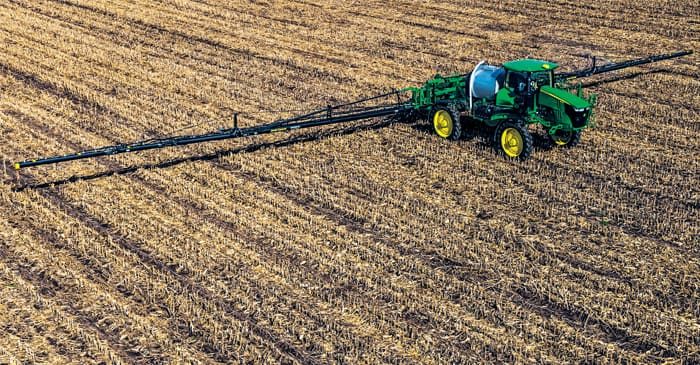No-Till Farmer
Get full access NOW to the most comprehensive, powerful and easy-to-use online resource for no-tillage practices. Just one good idea will pay for your subscription hundreds of times over.

When it comes to the form and function areas of sprayers, spray booms play a critical role in dispersing chemicals an efficient, accurate manner to control weeds or fertilize crops.
Sprayer design has evolved from primarily simple, pull-behind tools to self-propelled machines dedicated to covering hundreds of acres quickly in a timely manner at the right rate — and in the proper droplet sizes to reduce environmental concerns.
To do that, sprayer designers have adopted wider working widths, on-the-go automated boom height adjustment and ever-more precise section control.
Ask most farmers the definition of “productivity” and you’ll hear references to covering more acres in less time, reduced time adjusting equipment and less time making repairs.
Those answers are part of the reason sprayer builders are extending booms from the common 90-foot working width of the early 2000s to today’s boom length of 120 feet or more.
Wider booms yield more acres covered in a single pass, but steel booms longer than 120 feet begin to reach weight and balance limits, along with engineering challenges involving torque, metal fatigue and vibration.
As digital controls become more sophisticated on farm sprayers, the term “Pulse Width Modulation” pops up with increasing frequency, particularly as it applies to on-the-go individual nozzle control. The term may sound complicated, but its precision capabilities are making it go-to technology in modern section control design.
Ajay Sharda, Kansas State University precision agriculture and machine specialist, explains PWM this way.
…